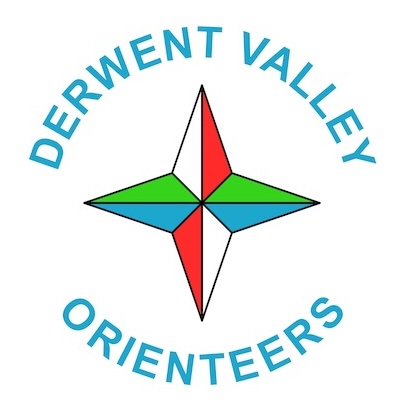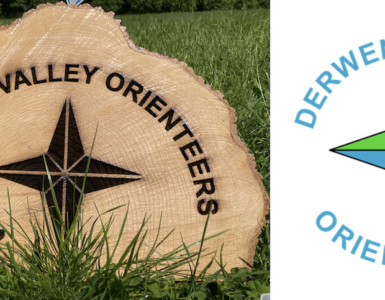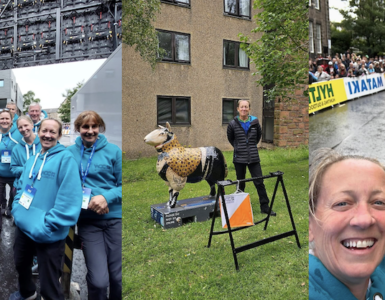The Johnsons’ trip to ASOM in Belgium
If you’d told me a few years ago that I’d be making annual trips to Belgium for a weekend of urban events, I wouldn’t have believed you, but ASOM – Antwerp Sprint Orienteering Meeting – is now a firm fixture in the Johnson calendar. A return trip to Brussels and beyond on the Eurostar gets you a Friday mixed sprint relay, a Saturday two-leg sprint race and a Sunday urban set in one of Belgium’s many historic cities, worth a visit in their own right. The urban event is usually part of the EuroCity series of Urbans, and the sprint event also incorporates a world-ranking elite competition so you can witness urban orienteering as you would practise it yourself, though only in your wildest dreams.
We’re not the only ones who approach the event with eager anticipation; out of 500+ competitors at this year’s event, over 100 were British, and in the Sunday UltraVet Urban, the first nine competitors were all British. I couldn’t even escape the old familiar faces by fleeing abroad. Helen Chiswell, Steve and Anne Kimberley were with us, also representing DVO, although the club’s overall presence was perhaps diminished by participation in the recent Slovakian World Masters.
Friday Night Mixed Sprint Relays
The opening Mixed Sprint R elay is always something special. The Ostend version took place within the grounds and buildings of an old hospital, under the shadow of a Napoleonic fort, while the last Antwerp iteration, being earlier in the year, was entirely in the dark. I don’t know what it is about the proliferation of redundant hospitals in Belgium, but Ghent’s Mixed Relay again offered up a former mental health hospital as a setting for the event.

110 two-person teams lined up at the Start within one of the hospital’s outer courtyards. 87 of these comprised orienteers under 55. Can you imagine a sprint event in the UK where over 75% of the competitors were under 55? At the NOC Nottingham University Urban, just 30% of the competitors fitted this description. Perhaps the comparison is not a fair one because many of the elite sprinters were taking part too, but that only added to the attraction of the event for me, a chance to compete in theory against those whom I can normally only stare at, open-mouthed, as they disappear into the distance.
The event stuck to its winning formula of providing each team with four courses on four identical maps printed on a single sheet, so arranged that, at the start whistle, the field split into four, each pursuing their own sequence of controls, before handing the map to their partner on their return.
I took the view that the best policy was to let everyone else get on with it and find the controls at my own pace. The first two involved navigation round the outbuilding of the hospital, but the third leg stretched across the map before locating a control within the confines of the hospital itself, requiring a navigation of its narrow corridors, the closest I’ve come to indoor orienteering. By the time teams embarked on their second tour, gloom was closing in, casting an eery light on the long corridors and increasing the atmospherics.
 A truly memorable event and a great start to the weekend. Val and I came in 11th out of 23 teams. Not bad considering some were a decade or more younger than us.
A truly memorable event and a great start to the weekend. Val and I came in 11th out of 23 teams. Not bad considering some were a decade or more younger than us.
Saturday Sprints
As in previous years, these were based in a school which also served as the Finish. Again I find it difficult to imagine a British school that would allow a bunch of orienteers to take over their premises for a day to such an intimate and all-embracing extent, but the Belgians seem to have no problem in arranging it.
By the time the first legs took place in the afternoon, the elites had already undertaken two lots of knockout sprints to determine who reached the semis (of which peculiarly there were three) and then the Finals, both of which featured simultaneous starts, i.e. chasing starts in the literal sense of the terms. The latter stages of the elite competition were interspliced between our two sprints so we had the chance to witness the athleticism and speed of the crème at close quarters.

Our first sprint split into two halves. There was a long narrow section which involved zigging and zagging between children’s playground, outdoor gyms, offices and colleges before we crossed into a closer network of buildings and gardens. If the intention of the reasonably straightforward first section was to lure me into a rhythmic daze, it certainly worked, because I quickly found myself working out how to get through a non-existent gap in the buildings and losing valuable time as a result. Unsettled, I found myself running in the opposite direction to the next control and what had started as a promising run lost its shine. I was still gratified to find myself in fourth place, 20 seconds ahead of our very own Steve Kimberley.
Could I hold onto this lead? What do you think? Of course not. Starting just outside the school I thought I was running south, only to find I’d turned west. The rot quickly set in, nothing appeared where it should be and when I found myself in danger of running off the map some streets away from Control 4, I knew the game was up. To cap it all, on downloading, I was greeted with the news that I’d mispunched at Number 1 anyway. Oh the shame of Non-Classification.
I was left to contemplate the error of my ways, chewing on fruit gums or fruit itself which are the staple of every Belgian finish. Recently the organiser of the Scunthorpe urban event treated everyone to an ice cream whilst finishers at the White Rose could help themselves to a choice of one of a dozen traybakes. This new trend in orienteering is only to be encouraged; I can see it being the key to a resurgence of interest in the sport.
Sunday Urban
This was staged in a park on the east side of Ghent in pretty sultry conditions and more or less comprised a tour of the sights of the mediaeval centre of Ghent, although not in conditions you would call conducive to taking in and appreciating the grandeur of the place.
The first section of my course threaded its way through the narrow streets but largely taxed the concentration rather than being overly-technical. By Control 6 I had settled down and was starting to enjoy the run. However the streets of Ghent city centre are renowned for being lined with cobbles, and there being several million of these, the chances of me coming a cropper on one of them were fairly high. And indeed so it came to pass. One moment I was blissfully swanning along, the next I was splattered face down, getting up close and personal with the road. Ouch, those cobbles are hard.
It took a little while to persuade my left knee and right elbow that they really did want to get up and continue from where they left off, but having succeeded, I rewarded their efforts by promptly running straight to 8 instead of 7. It was all going terribly wrong again.
Towards the end, the planner had blocked several streets off – in practice they were guarded by an official – to generate a bit of route choice where otherwise the leg would have been straightforward. I’ve come across this to only a modest extent in sprint races but rarely in urbans and it occurs to me that it might be employed in some of the less thrilling East Midlands towns (Grantham and Southwell spring to mind) to add a bit of complexity to otherwise dull areas.
Earlier, on the way to the Assembly, we had passed, on a bridge over the canal, a statue of a young lady who was for reasons I didn’t find out was a) naked b) red and c) listening to music through headphones. I’m all in favour of redressing the imbalance between male and female statues but somehow, I don’t think this is the way forward. Val had the pleasure of reacquainting herself with this work of art because it was the antepenultimate control on her course.
 I ended up 6th on UltraVets, sandwiched between SYO’s Bill Hanley and Steve, and was as ever left to ponder on what might have been. Helen came 12 in Vets, while Val scored an 11th place on SuperVets, Anne 33rd – 10 of the top 11 in this class were British. It seems that sprints and urbans are a particular British speciality, at least in the veteran categories.
I ended up 6th on UltraVets, sandwiched between SYO’s Bill Hanley and Steve, and was as ever left to ponder on what might have been. Helen came 12 in Vets, while Val scored an 11th place on SuperVets, Anne 33rd – 10 of the top 11 in this class were British. It seems that sprints and urbans are a particular British speciality, at least in the veteran categories.
As we returned on the Monday, we were left to reflect on another hugely enjoyable weekend and to look forward to next year’s Belgian weekend which will be in Leuven between 18th and 20th May. It’s on our 2024 calendar already.
Graham





